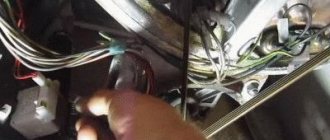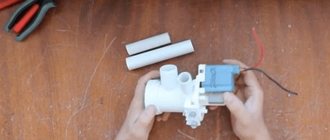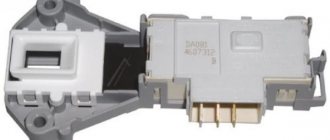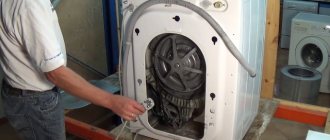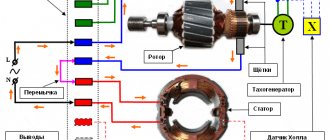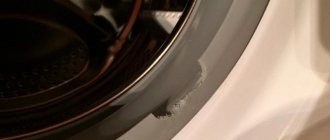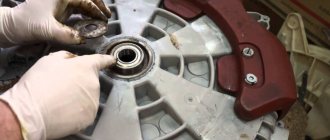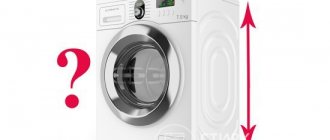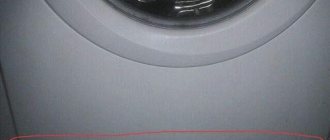For people who do not have in-depth knowledge of electrical engineering, the term residual current device (RCD) will not say anything specific. And many houses and apartments still do not have such a device. Although it is definitely worth installing in rooms with a large number of electrical appliances (for example, a kitchen or bathroom).
This device is designed to protect people and electrical equipment from accidental electric shock or leakage of electric current.
It is also possible to install a differential automatic machine (difavtomat) instead of an RCD. The general principle of operation of the difavtomat is similar to a residual current device, but has several additional functions: protection not only against current leakage, but also against short circuits and overloads in the electrical network. An automatic switch is also installed in its design.
Externally, it looks like a small plastic box with a toggle switch and several holes for connecting electrical wires. But the apparent simplicity of the design has no analogues.
The operating principle of the RCD is quite simple. The device constantly “compares” the current going to electrical appliances with the current coming from them, and if a difference occurs, it automatically turns off the power grid. But there are still drawbacks to this design. If, during an electric shock to a person, the current does not leave the closed circuit (is not grounded), the RCD does not trip because it “does not see” the voltage leak.
Rules for choosing ouzo
The most frequently asked question when installing and connecting washing machines: is it necessary to install an RCD for a washing machine? The answer is simple - yes, it is necessary. After all, the washing machine itself is a fairly energy-consuming device, and also operates in an environment with high humidity, due to which it belongs to the category of increased danger. That is why the installation of an RCD is necessary when connecting washing machines to the power supply network.
In order for the washing machine to serve for many years, and its operation to be safe, it is important to choose the right residual current device. To do this, you must follow the following rules:
- Device power. The choice of RCD for a washing machine based on power is based on the rated power of the electrical network. There are single-phase and three-phase devices.
- Mains voltage. Single-phase RCDs are designed for 220 V, and three-phase RCDs are designed for 380 V.
- Current strength. The most common RCDs, which are recommended by experts, have 30 mA protection. It can be set to 10 mA, but a similar degree of protection is not required for household electrical equipment.
- Design features of the RCD. Since the washing machine has a high level of power consumption, it is better to choose a class A residual current device. It is also possible to install class AC, but this type does not always perform its function well.
- Features of the release and marking of the machine. An RCD marked “C” is suitable for the electrical network in an apartment or private house. There are also devices with digital markings; in this case, the correct choice would be a device with a C16 marker or, more rarely, a C25.
- Additional levels of protection. Some RCD models do not have a protection system in case of a break in the neutral conductor, which leads to the device ignoring current leaks.
Uzo connection
It is better to entrust connecting the washing machine to a specialist electrician, however, if you have basic knowledge in the electrical installation industry, you can complete this task yourself without much difficulty. The washing machine must be connected to the electrical network via an RCD in compliance with safety rules, comply with all requirements and take into account the technical characteristics of both the washing machine and the electrical wiring.
- Power, cross-section and wiring markings. The most common power of washing machines is from 2 to 2.5 kW. The meaning of this characteristic is written in the documents for the washing machine or on the back wall of the machine itself. Based on its power, you can choose the wiring of the correct cross-section. If the socket for the washing machine is powered by a two-core, especially aluminum, wire, it is necessary to replace the electrical wiring with a three-core copper cable. In this case, it is better to take a wire with a cross section of 2.5 square meters. mm, because this outlet will also plug in other electrical appliances, for example, an electric razor or a hair dryer.
Grounding of electrical appliances. Since washing machines are most often installed in the bathroom, they are equipped with a maximum protection system against electric shock - protection class 1. This means that the device is equipped with a grounding system that is built into the power plug.- Socket. Taking into account the presence of a grounding system in the plug of electrical appliances, it is better to choose a socket with an appropriate contact, the so-called “Euro” socket. If the outlet will be installed directly in the bathroom, it is better to give preference to a model with an increased degree of protection. Such models are designed for use in rooms with high humidity.
It is strongly recommended not to use a variety of extension cords and tees, since their reliability is not always at a high level. Such devices may not always provide a high-quality connection to the grounding contact or withstand high loads.
What is it for?
The main requirement when installing an RCD on washing equipment
Before we talk about why an RCD is needed, let’s define those electrical circuit protection devices that every home needs to have. People uninitiated in the basics of electricians may confuse an RCD with a circuit breaker, which is also simply called a circuit breaker. This switch is an analogue of the well-known electrical plug with a fusible rate, which burned out if the current exceeded a certain value. However, unlike a stopper, this device is reusable and once it is triggered, when the toggle switch is turned on, it is ready for use again.
Typically, this circuit breaker cuts out the current supply during short circuits, which most often occur when the integrity of the insulation in the wiring is broken and the zero and phase are shorted. Thus, when the machine is triggered, the wiring or electrical content of household appliances is protected from damage and burnout, and the living space is protected from a possible fire. Household circuit breakers for residential premises with many electrical appliances must be rated for a current of at least 16 amperes. If the apartment has an electric stove, dishwasher and washing machine, electric water heater and other appliances with high energy consumption, then a circuit breaker of 25 amperes or more may be required.
Washing machine commissioning diagram
Let's consider a typical case with a washing machine when it is connected to a regular single-phase network without grounding. Let's imagine that for one of the reasons (due to old age, wear or mechanical stress) the insulation on some phase conductor was damaged, as a result of which the phase voltage reached the metal body of the washing machine. This will not affect the operation of the washing machine in any way and its behavior will not cause any suspicion. But, if a person accidentally touches simultaneously its metal body and any conductive object that has an outlet to grounding, for example, a water faucet or a heating radiator, an electric shock may occur.
At best, a person will experience unpleasant sensations, an electric shock. At worst, cardiac arrest is possible. The currents flowing through the body will be quite small and will not reach the value at which the circuit breaker is knocked out. After all, for a fatal shock to a person, a current value of 50 mA is sufficient, and circuit breakers are designed for a current of 16 amperes or more. To avoid such cases, it is necessary to install an RCD.
It is impossible to connect an RCD without a difavtomat
The RCD is connected in series with the consumer (microwave oven, washing machine, etc.) and measures the difference in current at the input and output. Ideally, this difference should be zero. In other words, as much current came in, so much came out. For this reason, these devices are also called differential automatic machines. The name comes from the English verb Difference, which means difference, difference. If a difference is detected, then there is a leakage current.
When the magnitude of the leakage current reaches the value for which the RCD is designed to operate, it knocks out the current supply in a fraction of a second, excluding fatal injury to a person. Currents greater than 50 mA are dangerous for humans, as discussed above. Therefore, to protect life, devices with a leakage current of no more than 30 mA are used.
Let's return to the above-mentioned case with a washing machine connected to a regular single-phase network without grounding. When a person touches the body of such a machine, which is energized as a result of an insulation breakdown, the device will disconnect it from the network when it detects a leakage current passing through the person’s body.
The situation will be completely different if there is a grounding circuit. If a voltage breakdown occurs on the body of the washing machine, the current will flow through the phase-ground circuit. Therefore, the RCD immediately knocks out the power circuit, thereby ensuring safety.
Connection diagram of the washing machine to the power supply system
For a washing machine, it would be better to install wiring that is powered directly from the electrical distribution panel. The RCD is installed in a place convenient for use, but preferably outside the bathroom. The socket is connected to the power supply only after a residual current device.
What not to do when connecting a washing machine:
- Close the body of the washing machine with metal water pipes or the heating system (in other words, do not ground it);
- Close the grounding and neutral contacts in the socket - this will trigger the RCD.
How does an RCD work and what is a difavtomat?
Before you start using expensive household appliances, you need to decide which method will be most effective to protect them.
A standard residual current device consists of:
- plastic case;
- current transformer;
- electromagnetic relay;
- current release;
- self-testing mechanism;
- New devices additionally have electromagnetic cut-offs.
Under normal network conditions, the relay does not operate, but if there is an increased load on the electrical wiring, the installed machine forcibly de-energizes the circuit, breaking it.
This situation can arise when there is a power surge in the network, a person touches a bare wire, and water gets on the wiring. If the circuit breaker trips, there is no need to replace it. Unlike fuses, this device is designed to be used over and over again.
Maximum protection for the washing machine will be provided by a modern device - a difavtomat, which combines a standard unit and an automatic machine. In addition to the fact that this device provides the full range of necessary protections, it also saves space in the distribution panel.
Reasons for triggering the ouzo
It is not often that the RCD trips when the washing machine is turned on, but it still happens sometimes. And in this case, you should not immediately call a specialist. You should first try to independently determine the reason for the operation of the protective device, and then decide what to do next.
There are a large number of reasons why an RCD is triggered, the most common of them are listed below:
- The residual current device is not selected correctly. If the RCD was selected without taking into account the characteristics of the washing machine, and its energy intensity is lower than necessary, then it will immediately turn off, perceiving the inclusion of more powerful equipment as a network overload;
- Problems with electrical wiring. Old or unsuitable electrical wiring may not be able to withstand the load, which can also lead to the machine tripping (in this situation, the RCD protects old or weak wiring from fire);
- Electricity leakage onto the equipment body. In this situation, if the neutral wire is connected to the housing and additional grounding is created, the protective device automatically turns off;
- A malfunction of the heating element, electric motor or surge protector, or shorted contacts and buttons can also trigger the RCD. In this situation, in the absence of knowledge in the field of electrical engineering, it is better to turn to specialists.
Calculation of the current characteristics of the difavtomat
The automatic device on the washing machine will protect against both short circuit and breakdown to the body at the same time. Which type of automatic machine to install on the washing machine depends on its characteristics, the state of insulation of the conductors, location and operating conditions. Typically its power ranges from 1500-2500 W. If leakage currents (Ilt) are not indicated, then when choosing, you need to focus on the rules for electrical installations.
According to them, Iut of the device is calculated as the product of 0.4 mA by a number equal to the load current of the device. The latter is calculated by dividing the power of the device in watts by the network voltage in volts.
For example, the power of a washing machine is 2.5 kW. Then the load is 2500/220 = 11.37 Amperes. Iout of the device will be equal to 0.4x11.37=4.548 mA. If the differential circuit breaker is located in an electrical panel, far from the washing machine, then you need to take into account the leakage current of the phase wire from it to the device. It is equal to 0.01xL, where L is the length of the phase wire from the residual current device to the protected equipment.
The rules determine that the shutdown current (IΔn) of the RCD must exceed the total Iut of the protected line by at least three times. Therefore, with a cable length of 20 m and a load of 11.37 A, we end up with:
IΔn=3*(0.4xI +0.01xL)=3(0.4x11.37+0.01x20)=14.244 mA.
The closest in parameters in the range of manufactured difavtomats has an IΔn equal to 30 mA, and this is what you need to choose. The circuit breaker against short circuits and overvoltages is determined based on the load. Since in this case it is equal to 11.37 A, the closest one from the top in the range of automatic machines will have a rating of 16 A.
Selecting a difavtomat letter
When the washing machine starts, the starting current increases several times compared to the rated current. The difavtomat should turn off, but if you select it correctly, this does not happen. To understand the process, you need to analyze the time-current characteristic of the difavtomat. From it you can determine the speed and operating time of the electromagnetic release.
Protection devices are divided into three categories, according to which it is possible to determine how many times the electric current must be greater than the rated current in order for the machine to operate at lightning speed. This is what the lettering on the automatic machine says:
B16 means that it reacts instantly when the nominal value is exceeded by 3-5 times (48-80 A);- C16 means that the excess is 5-10 nominal (80-160 A);
- D16, respectively, 10-20 ratings (160-320 A).
It follows that in order to avoid false positives, it is better to use a difavtomat with the letter C, in this case C16 with Iut 30 mA.
In addition, there is such a characteristic as the rated breaking capacity. This is the maximum short circuit current that the automatic circuit breaker can turn off without loss of functionality. In new houses it is recommended to use circuit breakers with a value of 6000 A, in rural houses with old wiring 4500 A.
Appearance
General unification has led to the fact that it is very difficult to discern the difference between a difavtomat and an RCD based on the shape and size of the case.
For a single-phase network, the housings of these devices have a size equal to two housings of a single-pole circuit breaker. Each of them has a test button, they are two-pole. Installing an RCD on a DIN rail is no different from installing a difautomatic device.
Externally, differential circuit breakers differ from RCDs:
- according to the inscriptions on the front panel;
- labeling;
- functional diagram.
Usually at the top of the device below the name of the manufacturer is the name of the device. For example, VD and several numbers. VD means differential switch, that is, it is an RCD.
If the abbreviation RCBO is present (an abbreviation for the expression: residual current automatic switch), then it is a difavtomat. In case of damage to the inscription on the front panel, the manufacturer prudently embossed the name of the device on the side of the device.
True, to determine the type of device you will have to remove it from the DIN rail. But this method applies mainly to domestic manufacturers.
Foreign suppliers do not bother about this. Therefore, you have to navigate by markings and diagrams.
The difference is observed in the designation of the rated current. In the RCD it is written as a number, for example 16 A, which means that the device will operate normally at currents not exceeding 16 amperes. The main characteristic for it is the value of the shutdown current.
For a difavtomat, in addition to the leakage shutdown current, the time-current characteristic is important. It determines at what overload currents and how quickly the device will turn off.
Therefore, before the rated current value there is a letter indicating the limit of exceeding the rated current at which the device will instantly operate. If there is an inscription on the front panel, for example, “C16”, then this means that this is a difavtomat.
The electromagnetic release of this automatic device will instantly disconnect the line when the rated current is exceeded by 5-10 times.
On the RCD diagram on the front panel, you can see an image of the magnetic circuit of the differential transformer, a test resistor, three switches and a control winding.
Two switches disconnect the phase and neutral wires in case of leakage currents exceeding the setting. The third key is needed to allow the current limited by the resistor to flow, bypassing the transformer. Thus, an imbalance is created between the currents flowing through the phase and zero.
The diagram of the difavtomat, in addition to the RCD diagram, shows a key connected to the phase wire at the output of the transformer. Or maybe a different image.
Instead of an additional key, a square is shown with a figure inside a positive sine wave and a rectangular pulse. A sine wave means an electromagnetic release, and a square wave means a thermal release.
We suggest you familiarize yourself with How to clean a brass chandelier

